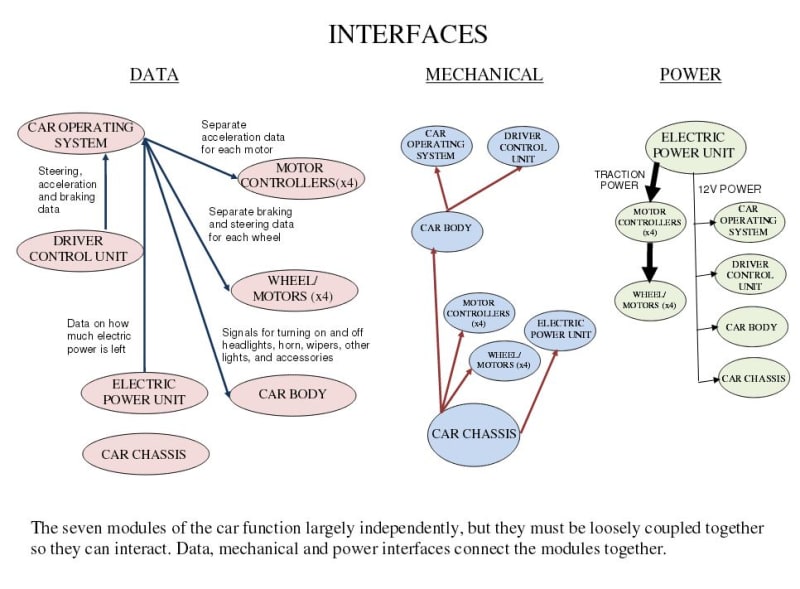Imagine this. Next time you buy a car, you don’t have to settle for what’s on a dealer’s lot.
Instead, you design your own car. You buy a Ford body, GM chassis, Intel motor controllers, Toyota wheel/motors, Honda electric power unit, IBM car operating system, and Nintendo driver control unit.
You mix and match modules to fit your needs. Then you can upgrade as technology improves.
We have invented that kind of car. With seven “black box” modules, our new modular design marks the first big change in car architecture since Henry Ford’s Model T in 1908.
Why change car architecture? To solve two problems.
First, car technology evolves slowly. Cars are safer, more reliable, and more efficient than 50 years ago. But not by much. We face many worries—global warming, peak oil, pollution, traffic deaths, traffic congestion. To overcome these worries, we need better cars, fast.
Second, the carmaking industry stays troubled. Things look better now, but very recently we saw two out of three American carmakers bankrupt and nationalized. Tesla aside, no new companies compete in carmaking. The car industry needs help.
We help solve both problems.
In our car, each module performs one or more functions of the car. Publicly defined interfaces connect the modules together. That lets each module be developed and tested separately.
Having the modules loosely coupled together also lets the car’s modules be easily disassembled and re-assembled. So just like with a desktop computer, you can buy modules instead of just a complete car.
Making cars modular will make cars evolve faster, more like computers. A 50-year-old car in perfect condition can still be a daily driver. But no one can use a 50-year-old computer. It filled a room. Today we hold more powerful computers in the palm of our hand. Modular cars can evolve at that computer pace.
Making cars modular will also make carmaking a more vibrant industry. Here again, the computer industry shows how. Fifty years ago it looked very different from today. IBM—called “Snow White” and its feeble competition the “Seven Dwarfs—dominated the industry.”
Computers went modular in the 1960s, and the computer industry changed. Competition increased. Silicon Valley was born, where startups thrived. The computer industry became broad-based and vibrant. Many computer companies failed, if not most. But that did not matter. Others took their place.
We think modular cars can make Detroit, now an economic wasteland, the same kind of economic rain forest that thrives in Silicon Valley. No longer would carmakers be too big to fail. Startups could break into carmaking. We would all benefit.
When the first cars were made, their designers simply took a carriage and replaced the horse to make a horseless carriage. Today’s electric cars follow the same pattern. They replace a gasoline engine with an electric motor, but it’s hard to tell the difference.
Our car is different. Our car, with its modular architecture, is a truly electric car. Our car can change cars and change carmaking.
Like this entry?
-
About the Entrant
- Name:Edward Durney
- Type of entry:teamTeam members:Carl Durney
Brian Durney
Alan Durney
Larry Ipson
Carolyn Ipson
Benjamin Ipson
Daniel Ipson - Patent status:pending








